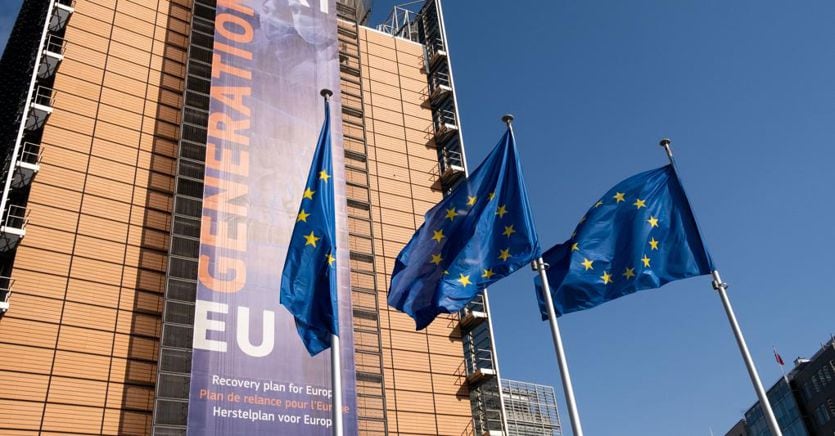In the era of target e milestones of the Recovery and Resilience Plan, essential objectives to be achieved in order to obtain the extraordinary resources negotiated with the EU, it is not really the case to lower attention to the other great treasure trove of European resources: funds for cohesion. The new “Report on interventions in underutilized areas”, which has just been sent by the government to Parliament, will freshen up ideas. The estimate is one of the cyclopean ones: 14 years of history, the two cycles 2007-2013 and 2014-2020, which adding together the national funds, make 206.3 billion fragmented in the plethora of 1.7 million projects (1.7412.412 for accuracy).
The Report, prepared by the Ministry of the South led by Mara Carfagna, indicates that as of December 31, 2021, payments amounted to 94.4 billion or 45.8%. By 2023, over 30 billion of the 2014-2020 programming are to be spent. The delay is evident, also given that the spending procedures for the new 2021-2027 Agreement will soon be in full swing, of 76 billion, of which 43 European, on which the EU government and Commission are in detail (see Il Sole- 24 Hours of June 10). But the Department of Cohesion Policies (Dpc), directed by Ferdinando Ferrara, in its meticulous reconstruction offers some interpretations to consider. Part of this data is judged to be “physiological due to the timing of implementation of the interventions which spread the accounting effects over several years, beyond the expiry of each reference cycle”. Another part – it is recognized however – “is due to implementation difficulties, which, moreover, cohesion policies share with many other intervention policies in Italy, also due to the sharp drop in the size of public administration staff over the last twenty years. and on which in the last two years the pandemic which required extraordinary reprogramming has had a strong impact ». The thesis is therefore that in the current conditions the PA will continue to struggle and accumulating funds on funds is not enough: “The financial resources available are not sufficient on their own” and much of the success of the interventions, it is emphasized, depends “on the programmatic and speed of implementation.
Ministries do worse
In absolute value, the government shows a slight, almost imperceptible, progress, i.e. an advancement of payments of 10 billion compared to 2020, the year in which the additional expenditure was 9 billion. It should also be taken into account that the calculation includes approximately 14.4 billion of React-Eu funds, of which 9.5 for the South, assigned in addition to the 2014-2020 cycle only recently, as a response to the pandemic crisis. The report also shows the distance between total resources assigned to Italy (206.3 billion) and resources effectively monitored (170.9 billion), because the chronic inefficiency of the administrations in uploading data to the monitoring system is discounted. But above all, the document, together with another recent work by the DPC, the “First annual report on the progress of Development and Cohesion Plans”, dispels an interpretation that has become the stereotype par excellence of cohesion policy in all these years. That, that is, the delays are all to be attributed to the Regions, and in particular to the Southern Regions. But in the percentage of expenditure to do worse are the central administrations and ministries, owners of national operational programs (Pon). If we look at the 2014-2020 EU programming, for example, the worst performance in terms of certified expenditure compared to the planned one is that of Pon Governance (18.4%), Pon Metro (19%), Pon Ricerca (20.7%), Pon Scuola (35.8%), Pon Inclusione (41.5%). Results lower than practically all the programs with regional management, which both for the South (which absorbs about 75% of resources) and for the Center-North exceed 40% and reach 86% in Puglia, 69% for Lombardy, 68% in Emilia Romagna, 61% in Campania. The ministerial slowness becomes even more evident by observing the data of the Development and Cohesion Plans (national funds). Here the central administrations have so far spent only 8.9, compared to 18% for metropolitan cities and 46.7% for regions and autonomous provinces.
The rain of projects
Despite the difficulties of monitoring, reliable data exist on the progress of more than 1.7 million projects. The Open Cohesion portal, coordinated by the Dpc, reports that only 25% of the projects are concluded, 6% liquidated. 63% are still ongoing and 6% have not yet started. 29% of the interventions concern transport and mobility, for a total value of over 40 billion. Business competitiveness follows with 12%, the environment at 11%, education-training and social inclusion-health both at 8%, research and innovation at 7%, culture and tourism at 6%, networks and digital services at 4%, energy at 3%. If we analyze the nature of the investment, infrastructure projects largely excel with 104 billion, almost double the resources used for the purchase of goods and services. About 25 billion go to business incentives and 8.7 billion are classified as contributions to people.
